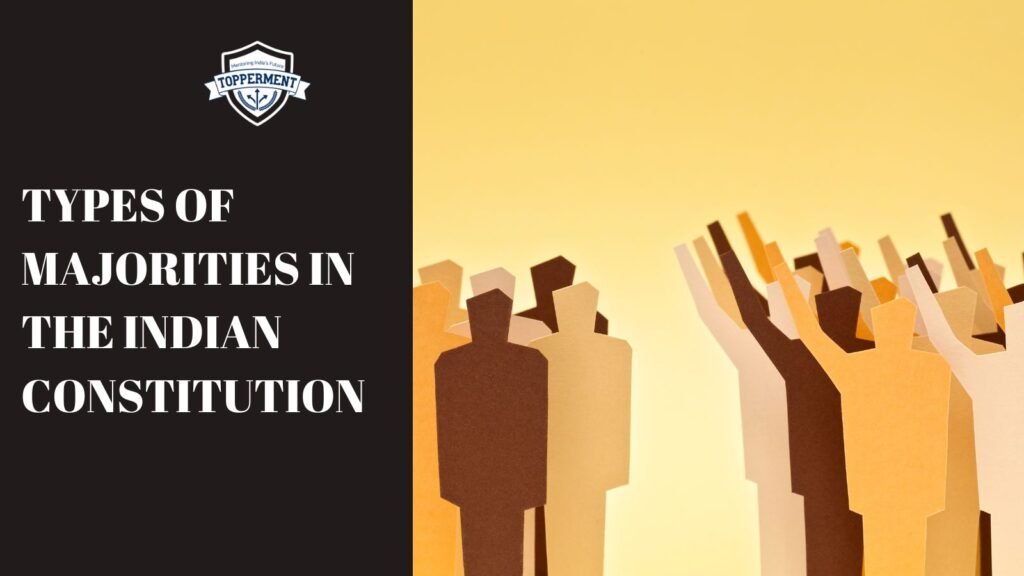India follows a parliamentary democracy which means all the major decisions are taken by the Parliament. There are major types of majorities in the Indian Parliament. Today we will be discussing in detail about types of majorities in the Indian constitution.
To pass any bill, the parliament needs to pass them with a majority. The constitution provides four major types of majorities that are Simple majority, Absolute majority, Effective majority, and Special majority
1)Absolute Majority
The absolute majority refers to the majority of more than 50% of the total membership. The absolute majority count is 273. There are 545 total members of the Lok Sabha. The majority is used during the general election, for the formation of government at the Center and States.
2)Simple Majority
The simple majority refers to a majority of more than 50% of the members present and voting in the house. The majority is also known as the Functional or Working majority. When the law doesn’t specify the kind of majority needed, a simple majority is used for passing bills or motions. The simple majority is used in instances like passing money bills/financial/ordinary bills, To declare a financial emergency, Declaring President’s rule, and Electing the speaker, and Deputy speaker of the Lok Sabha.
3)Effective Majority
The effective majority refers to a majority of more than 50% of the effective strength of the house. The effective majority is also known as ‘ all the then members. The effective majority is used in instances like the Removal of the deputy chairman in the Rajya Sabha, the Removal of the Deputy Speaker of the Lok Sabha, and the State Legislature.
4)Special Majority
There are four types of special majorities that are Special Majority according to Article 249, Special Majority according to Article 368, Special Majority according to Article 368+50% of state ratification by a simple majority, and Special Majority according to Article 61.
Special Majority according to Article 249
The majority refers to 2/3rd members present and voting. This majority is used to pass a Rajya Sabha resolution to empower the Parliament to make laws in the state list.
Special Majority according to Article 368. This majority is used in instances during the passing of a constitutional amendment bill that doesn’t affect federalism, Removing judges of the supreme court or High court, Removing the Comptroller and Auditor General of India or the Chief Election Commissioner, natural emergency, and resolution of by the state legislature of the abolition or creation of the legislative council.
Special Majority according to Article 368 + 50% state ratification by a simple majority.
This majority is needed when a constitutional amendment tries to change the federal structure. The instances where a special majority as per 368 state ratification is used to pass a constitutional amendment bill that affects federalism like the position of High court judges.
Special Majority as per Article 61 This majority refers to the 2/3rd of the total strength of the house. The majority is used in instances of impeachment of the President of India. So this is all about types of majorities in the Indian constitution. The majority used to pass a resolution, motion, or bill varies depending upon the purpose.
Also Read
- Types Of Natural Vegetation And Their Significance | UPSC Environment
- Types Of Orbit And Their Significance | UPSC Science and Technology
Follow Us For More Content On:
https://www.instagram.com/topperment/


